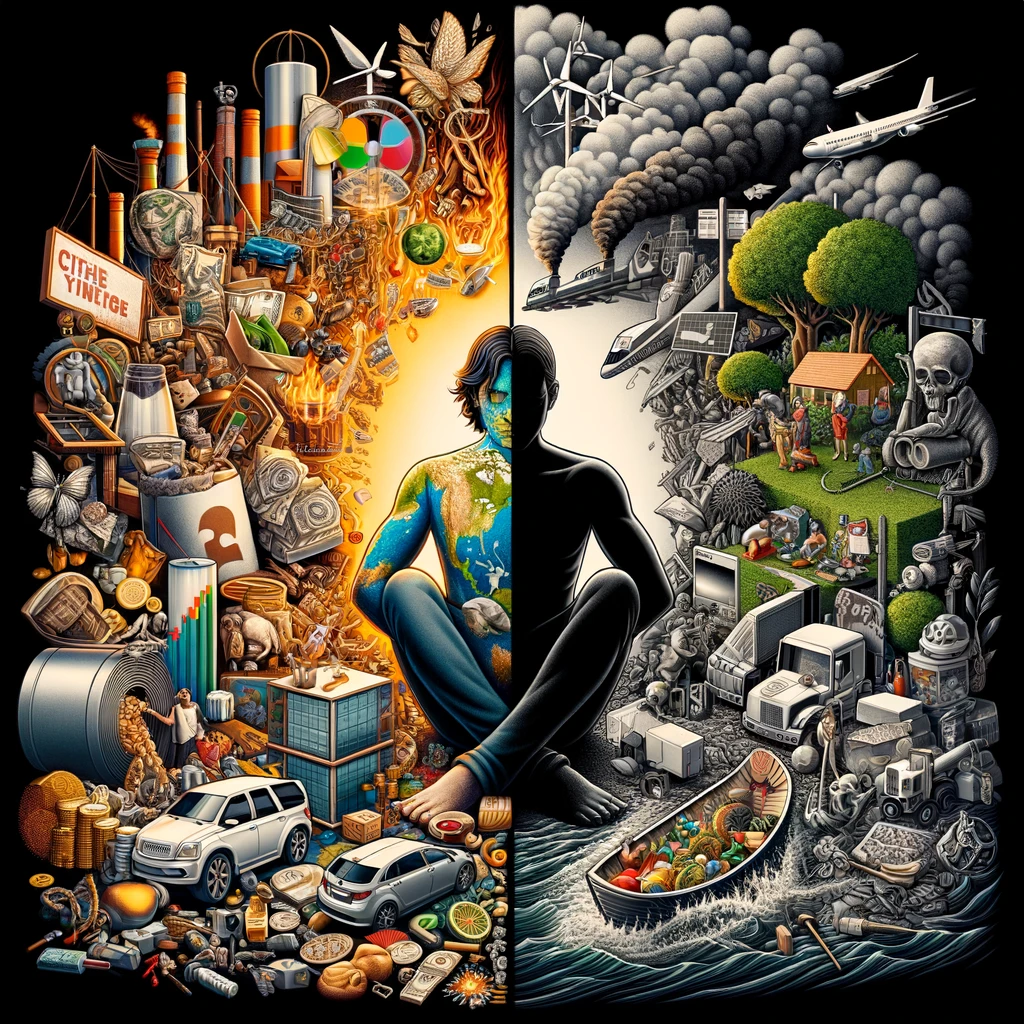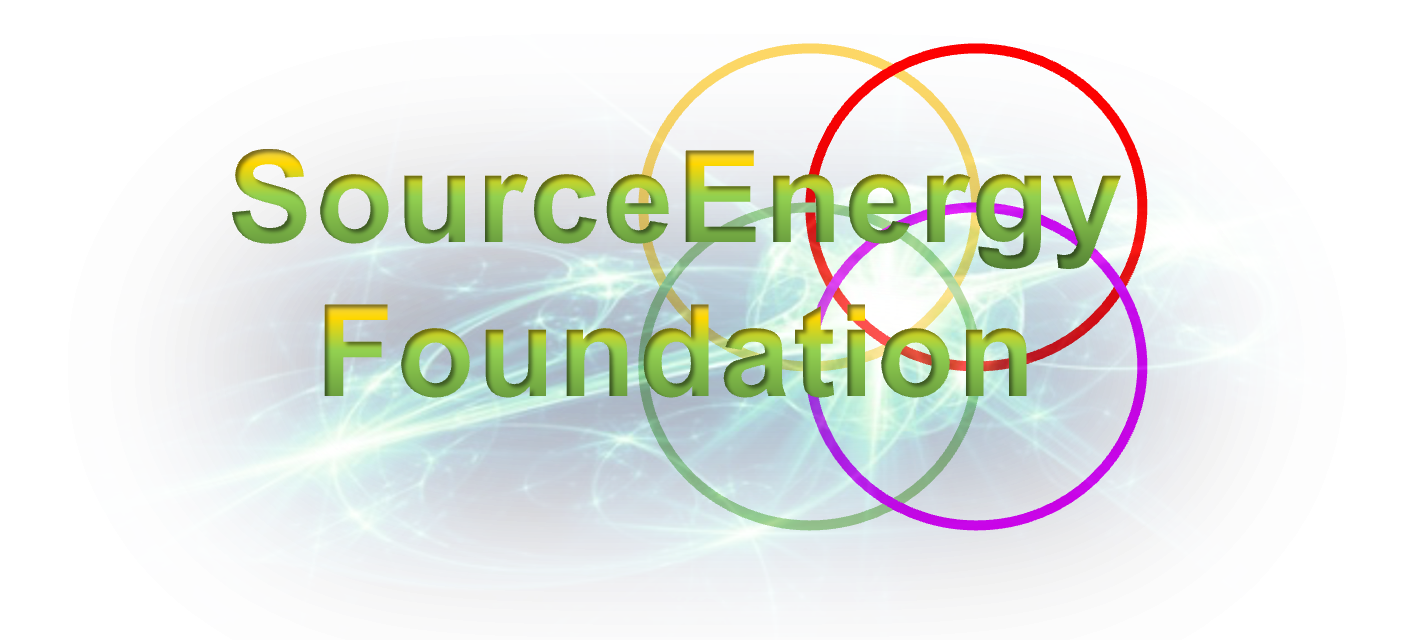The Book of James: WEM Lens
Rewriting the Book of James through the lens of the Wealth Ecology Model involves reinterpreting its themes and teachings to align with the principles of Energy, Technology, Community, and Education. Here’s a summarized version:
1. Trials and Temptations (Resilience and Adaptation):1

- Original Context: James speaks about facing trials and temptations with joy and perseverance.
- Wealth Ecology Interpretation: These trials are akin to challenges in managing and balancing resources (Energy) and adapting to changing environments (Technology). The ability to persevere through trials is seen as a crucial aspect of resilience, vital in both personal growth and sustainable development.
2. Listening and Doing (Education and Application):2

- Original Context: Emphasizes the importance of not only listening to the word but doing what it says.
- Wealth Ecology Interpretation: This reflects the idea of not only acquiring knowledge (Education) but also applying it effectively (Technology) to make tangible improvements in the community and individual lives.
3. Faith and Deeds (Integrated Approach):3

- Original Context: James famously states that faith without deeds is dead.
- Wealth Ecology Interpretation: This underscores the need for an integrated approach where beliefs (Energy) are actively manifested in actions (Technology) that benefit the community. It highlights the model’s focus on holistic development and ethical application of resources.
4. Taming the Tongue (Communication and Community):4

- Original Context: Discusses the power of the tongue and the importance of responsible speech.
- Wealth Ecology Interpretation: This can be seen as a metaphor for the impact of communication technologies and the importance of using them responsibly to foster positive community relations and prevent misinformation.
5. Warning Against Arrogance and Wealth Mismanagement (Sustainable Practices):5

- Original Context: Critiques those who boast about their plans and misuse wealth.
- Wealth Ecology Interpretation: This aligns with a call for sustainable and ethical management of resources, emphasizing the responsibility of individuals and organizations in using their wealth and influence for the common good.
6. Patience and Endurance (Community Support and Sustainable Strategies):6

- Original Context: Encourages patience and endurance, especially in the face of suffering.
- Wealth Ecology Interpretation: This can be interpreted as advocating for sustainable strategies and community support mechanisms that ensure long-term resilience and prosperity.
7. Prayer and Restoration (Energy and Renewal):7

- Original Context: The power of prayer, especially in restoring those who have strayed.
- Wealth Ecology Interpretation: Prayer is seen as a vital energy source for renewal and realignment, emphasizing the model’s focus on spiritual energy as a key component of a balanced and prosperous life.
By reinterpreting the Book of James through the Wealth Ecology Model, the teachings are contextualized in a contemporary framework, emphasizing the importance of sustainable practices, ethical resource management, and the integrated development of individuals and communities.
- 1. Trials and Temptations (Resilience and Adaptation) in the Wealth Ecology Model
Original Context: In the Book of James, the author advises readers to consider it pure joy when they face trials and temptations, seeing them as opportunities to develop perseverance. This perspective is rooted in a spiritual understanding of growth and character development through adversity.
Wealth Ecology Interpretation:
Trials as Resource Management Challenges (Energy):
Energy Management: The trials and temptations mentioned in James can be interpreted as challenges in managing and balancing life’s energies – physical, emotional, spiritual, and environmental. These energies are resources that require careful stewardship.
Joy in Challenges: Just as James suggests finding joy in trials, the Wealth Ecology Model might advocate embracing these energy management challenges as opportunities for growth and learning, contributing to a sustainable and fulfilling life.
Temptations as Calls for Adaptation (Technology):
Adapting to Change: Temptations, in this context, can represent the allure of easy or unsustainable solutions in the face of environmental and technological changes. They test our ability to adapt while maintaining ethical and sustainable practices.
Perseverance through Innovation: The call for perseverance in James aligns with the need for innovative and adaptable strategies in technology and environmental management. This perspective encourages finding sustainable solutions that align with ethical principles and long-term well-being.
Resilience in Personal Growth and Development:
Building Resilience: The passage from James, when viewed through the Wealth Ecology lens, emphasizes the importance of resilience – the capacity to recover and thrive amidst challenges. This resilience is key in both personal growth and the sustainable development of societies.
Sustainable Development: The concept of facing trials with joy and perseverance mirrors the model’s approach to sustainable development. It suggests that facing and overcoming challenges in resource management and technological adaptation are integral to achieving a balanced and sustainable future.
Conclusion: In the Wealth Ecology Model, the teachings of James on trials and temptations are reinterpreted as lessons in resilience and adaptation. This perspective underscores the importance of managing life’s energies sustainably and embracing technological changes with ethical and innovative solutions, contributing to both personal growth and the broader goal of sustainable development. ↩︎ - 2. Listening and Doing (Education and Application) in the Wealth Ecology Model
Original Context: In the Book of James, the emphasis is placed on the importance of not just listening to the word, but actively doing what it instructs. This teaching underscores the value of putting faith into action, moving beyond mere hearing to practical application.
Wealth Ecology Interpretation:
Acquiring Knowledge as Education:
Education and Learning: The act of listening to the word can be equated with the process of acquiring knowledge and education. In the context of the Wealth Ecology Model, this represents gaining insights and understanding about energy, technology, community, and education.
Beyond Theoretical Understanding: Just as James emphasizes understanding the word, the model values not only theoretical knowledge of these domains but also an awareness of their interconnections and impacts on sustainable development.
Applying Knowledge as Technology:
Practical Application: Doing what the word says aligns with applying knowledge in practical, technological contexts. This involves leveraging technology not just as tools but as means to implement the principles learned, whether it’s in sustainable energy practices, innovative educational methods, or community development projects.
Tangible Improvements: The application of knowledge through technology, as suggested in James, translates to making tangible improvements in individual lives and the community. It’s about using the acquired knowledge to make ethical, impactful changes that align with the principles of the Wealth Ecology Model.
Integration in Community and Personal Life:
Community Impact: The integration of education and technology for application has a ripple effect in the community, aligning with the Wealth Ecology Model’s emphasis on community well-being and sustainable practices.
Personal Transformation: Just as James calls for personal transformation through action, the model advocates for individuals to apply their learning to foster personal growth and contribute positively to their surroundings.
Conclusion: The concept of ‘Listening and Doing’ from the Book of James, when interpreted through the Wealth Ecology Model, emphasizes the importance of not just acquiring knowledge (Education) but also effectively applying it (Technology) for community and individual betterment. This approach highlights the necessity of integrating learning with practical application, ensuring that education and technological advancements lead to tangible, positive changes in line with sustainable and ethical practices. ↩︎ - 3. Faith and Deeds (Integrated Approach) in the Wealth Ecology Model
Original Context: In the Book of James, there is a strong emphasis on the interplay between faith and deeds. James asserts that faith, if not accompanied by action, is dead. This idea challenges the notion that belief alone is sufficient for a meaningful spiritual life, stressing the importance of tangible expressions of faith.
Wealth Ecology Interpretation:
Beliefs as Energy:
Internal Beliefs and Spiritual Energy: In the context of the Wealth Ecology Model, faith can be likened to an internal energy source – a driving force that motivates and guides actions. This spiritual energy is essential but requires external manifestation to be effective and meaningful.
Sustaining and Ethical Energy: Just as the model emphasizes sustainable and ethical energy practices, this interpretation of faith suggests that beliefs should be sustainably aligned with actions that positively impact the environment and society.
Actions as Technology:
Practical Application and Impact: Deeds, in this framework, represent the practical application of faith, akin to how technology is applied in the real world. It’s about using beliefs as a blueprint for actions that are innovative, beneficial, and ethical.
Technology for Community Benefit: Just as technology is used to improve lives and build communities, deeds driven by faith should aim to positively impact the community, aligning with the model’s emphasis on holistic community development.
Integration for Holistic Development:
Faith and Deeds in Harmony: The integration of faith (energy) and deeds (technology) is crucial for holistic development, as emphasized in the Wealth Ecology Model. This integration ensures that internal beliefs are not only professed but also actively shape the world through sustainable and ethical actions.
Ethical Application of Resources: This perspective also highlights the importance of using resources, whether they are natural, technological, or human, in a way that is ethical and aligned with one’s beliefs, ensuring that actions contribute to the greater good.
Conclusion: Interpreting “Faith and Deeds” from James within the Wealth Ecology Model framework emphasizes the necessity of an integrated approach to life and work. It suggests that internal beliefs (energy) should be actively manifested in external actions (technology) in ways that benefit the community and adhere to ethical and sustainable practices. This approach underscores the model’s focus on holistic development, where faith and action work in tandem to foster positive and meaningful changes in society. ↩︎ - 4. Taming the Tongue (Communication and Community) in the Wealth Ecology Model
Original Context: In the Book of James, there is a significant focus on the power of the tongue and the importance of controlling one’s speech. It’s emphasized that the tongue, though a small part of the body, has a great impact and can be a source of blessing or destruction.
Wealth Ecology Interpretation:
Communication Technologies:
Power of Modern Communication: In the Wealth Ecology Model, the ‘tongue’ can be seen as a metaphor for modern communication technologies. Just as the tongue has the power to influence, so too do these technologies have vast potential to impact societies and individuals.
Responsible Use of Technology: The call to tame the tongue aligns with the need for responsible use of communication technologies. It emphasizes the importance of ethical practices in information dissemination and the need to avoid spreading misinformation or harmful content.
Community Relations and Dialogue:
Building Positive Community Relations: The advice to control one’s speech is paralleled by the need to foster positive and constructive communication within communities. This approach is crucial for building trust, understanding, and cooperation among community members.
Preventing Misinformation: In an era where information is rapidly disseminated, the model underscores the importance of accurate and truthful communication to prevent the spread of misinformation, which can harm community relations and trust.
Impact of Words and Information:
Influence and Impact: Just as words can bless or destroy, information shared through technology can have significant positive or negative impacts. The model encourages a mindful approach to communication, recognizing its power to shape perceptions, opinions, and actions.
Ethical Communication as a Pillar: Ethical communication is seen as a pillar of sustainable development and community well-being. It supports the model’s focus on building cohesive, informed, and resilient communities.
Conclusion: The theme of “Taming the Tongue” in the Book of James, when interpreted through the Wealth Ecology Model, extends beyond individual speech to encompass the broader implications of communication technologies in society. It underscores the importance of responsible and ethical communication in fostering positive community relations, preventing misinformation, and contributing to the overall health and sustainability of communities. ↩︎ - 5. Warning Against Arrogance and Wealth Mismanagement (Sustainable Practices) in the Wealth Ecology Model
Original Context: In the Book of James, there’s a stern warning against arrogance, specifically in the context of boasting about future plans and the misuse of wealth. This critique is aimed at those who are confident in their self-made plans without acknowledging the uncertainties of life and who may use their wealth without regard for ethical or moral considerations.
Wealth Ecology Interpretation:
Sustainable Resource Management:
Critique of Resource Misuse: The admonishment against misusing wealth in James correlates with the Wealth Ecology Model’s emphasis on sustainable and responsible resource management. This perspective views wealth not just as a means for personal gain, but as a resource that should be managed with consideration for its long-term impact on the environment and society.
Ethical Considerations in Wealth Management: The passage encourages a mindset where wealth and resources are managed ethically, considering the broader consequences of financial decisions and actions on the community and the environment.
Responsibility of Individuals and Organizations:
Accountability in Wealth Use: The warning against arrogance and wealth mismanagement underscores the responsibility of individuals and organizations in how they use their wealth and influence. It aligns with the model’s principle that those with resources have a duty to utilize them in ways that contribute to the common good and sustainable development.
Beyond Financial Prosperity: The model advocates for a broader understanding of wealth that encompasses not only financial prosperity but also social, environmental, and ethical wealth. This approach encourages a shift from focusing solely on financial success to considering the holistic impact of wealth accumulation and distribution.
Advocating for Community-Centric Approaches:
Wealth for Common Good: The critique of wealth misuse in James aligns with the Wealth Ecology Model’s focus on community-centric approaches to wealth. It promotes using wealth to enhance community well-being and to address societal challenges.
Long-Term Sustainable Practices: The model encourages long-term thinking in wealth management, advocating for practices that ensure the sustainability and health of both the environment and society for future generations.
Conclusion: The warning against arrogance and wealth mismanagement in the Book of James, when interpreted through the Wealth Ecology Model, serves as a call for sustainable and ethical practices in resource management. It emphasizes the responsibility of individuals and organizations to use their wealth and influence for the greater good, aligning with the model’s focus on holistic, sustainable, and community-oriented approaches to wealth and resource utilization. ↩︎ - 6. Patience and Endurance (Community Support and Sustainable Strategies) in the Wealth Ecology Model
Original Context: In the Book of James, there is a significant emphasis on the virtues of patience and endurance, especially in times of suffering and trials. This teaching encourages believers to steadfastly bear their challenges with a sense of perseverance and faith.
Wealth Ecology Interpretation:
Sustainable Strategies for Long-Term Resilience:
Resilience through Patience: The call for patience in James aligns with the development of sustainable strategies in the Wealth Ecology Model. It suggests that enduring solutions to environmental, social, and economic challenges require patience and a long-term view.
Endurance in Resource Management: Endurance is interpreted as a commitment to sustainable practices over time, ensuring that resource management strategies are not only effective in the short term but also viable and beneficial in the long run.
Community Support Mechanisms:
Support in Adversity: Patience and endurance also speak to the importance of community support mechanisms. In the face of challenges, having a supportive community is crucial for maintaining resilience and hope.
Strengthening Community Bonds: The model advocates for strengthening community bonds as a way to support individuals and groups through difficult times, ensuring that no one faces challenges alone and that the community as a whole remains resilient.
Integration of Community and Sustainability:
Community-Centric Sustainable Development: The integration of patience and endurance in the Wealth Ecology Model underscores the importance of community-centric approaches in sustainable development, where the well-being of the community is a key factor in designing and implementing sustainability initiatives.
Long-Term Prosperity: The model suggests that enduring prosperity and well-being are achieved not just through economic growth but through the sustainable and ethical use of resources, community support, and the resilience of individuals and groups within the community.
Conclusion: The virtues of patience and endurance, as highlighted in the Book of James, are reinterpreted in the Wealth Ecology Model as key components for developing sustainable strategies and strong community support systems. This perspective emphasizes the importance of long-term thinking, resilience, and community cohesion in achieving lasting prosperity and well-being. It advocates for an approach where sustainability and community support are integrated to foster a resilient and prosperous society. ↩︎ - 7. Prayer and Restoration (Energy and Renewal) in the Wealth Ecology Model
Original Context: In the Book of James, there is a strong emphasis on the power of prayer, particularly in the context of healing and restoring those who have strayed from their faith. This aspect of James underscores the transformative and restorative power of prayer in the lives of individuals and the community.
Wealth Ecology Interpretation:
Prayer as a Source of Spiritual Energy:
Renewal through Prayer: Prayer, in the Wealth Ecology Model, is seen as a vital source of spiritual energy. It is an act that not only connects individuals with a higher power but also rejuvenates and re-energizes them from within.
Spiritual Energy in Balance: The model recognizes spiritual energy as an essential component of a balanced life. Just as we manage and harness environmental and physical energies, spiritual energy, accessed and nurtured through prayer, is crucial for personal and communal well-being.
Realignment and Restoration:
Realignment with Core Values: Prayer is interpreted as a means of realigning oneself with core values and principles. It is a process of introspection and connection that helps individuals and communities to return to their foundational beliefs and commitments.
Restoration of Well-Being: The restorative power of prayer, as mentioned in James, aligns with the model’s focus on holistic health. It advocates for the restoration of spiritual, mental, and emotional well-being as integral to overall prosperity.
Integration in the Wealth Ecology Model:
Holistic Approach to Prosperity: In the context of the Wealth Ecology Model, the practice of prayer integrates the spiritual aspect into the broader framework of energy management, emphasizing that true prosperity and wealth are holistic concepts that include spiritual health.
Supporting Sustainable Practices: Prayer and spiritual well-being are seen as supporting sustainable practices in other areas of the model, such as community building, ethical use of technology, and educational growth. They provide the moral and ethical foundation for these practices.
Conclusion: In the Wealth Ecology Model, the concept of prayer and restoration from the Book of James is reinterpreted as an essential aspect of managing and renewing spiritual energy. This perspective recognizes prayer as a key component in achieving a balanced and prosperous life, emphasizing the need for spiritual alignment and well-being in conjunction with sustainable practices in other areas of life. It highlights the model’s focus on a holistic approach to wealth that includes spiritual health as an integral part of overall well-being. ↩︎
